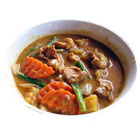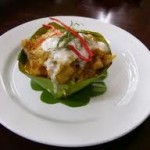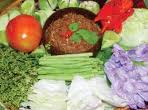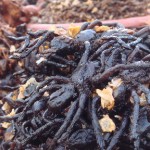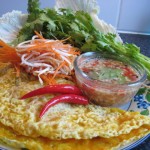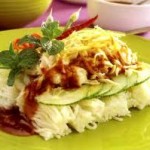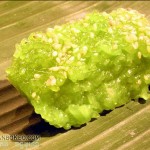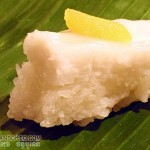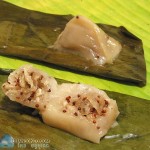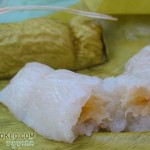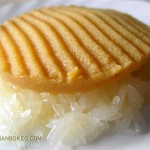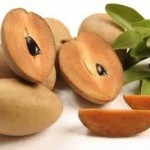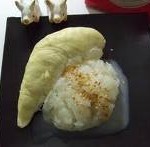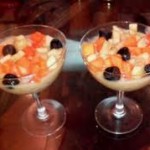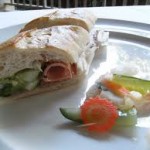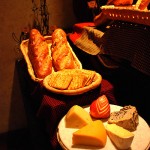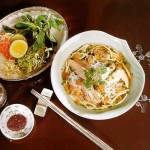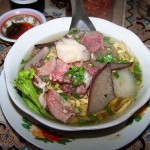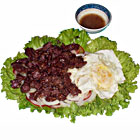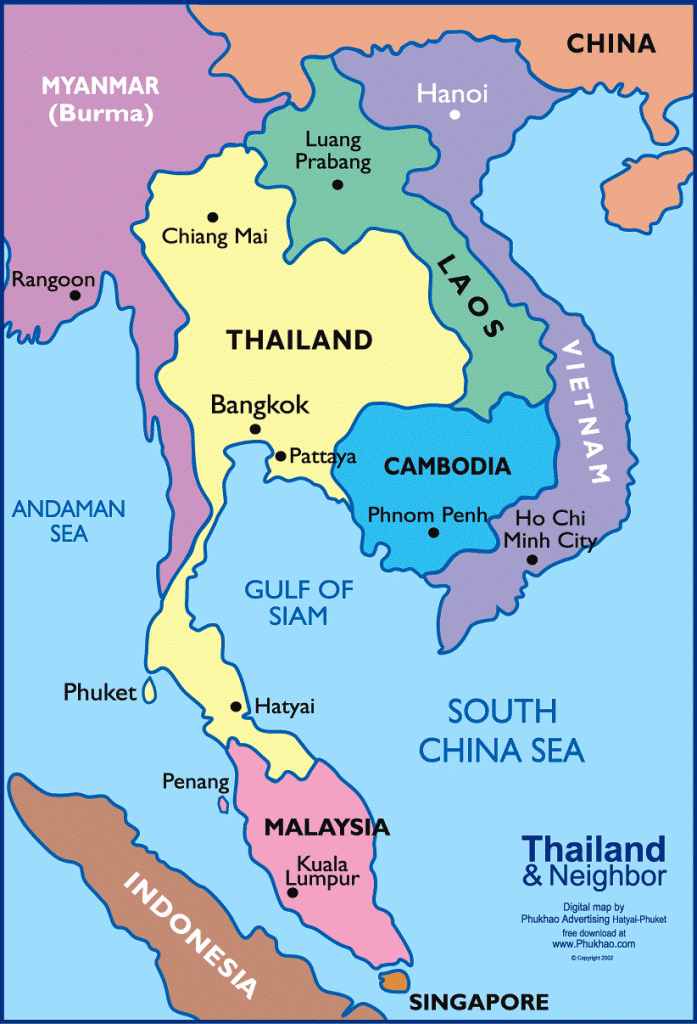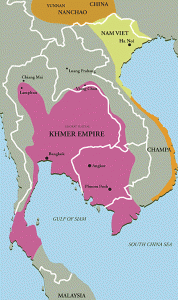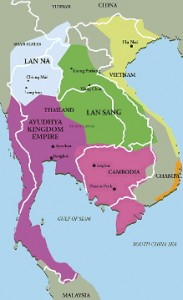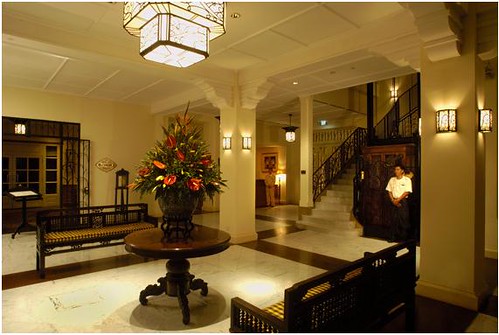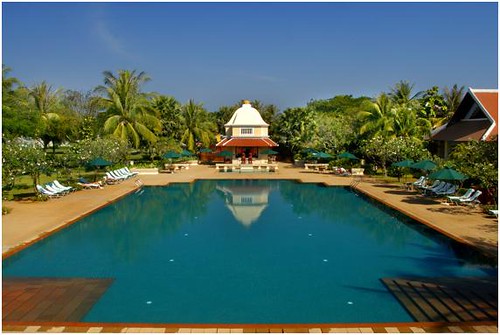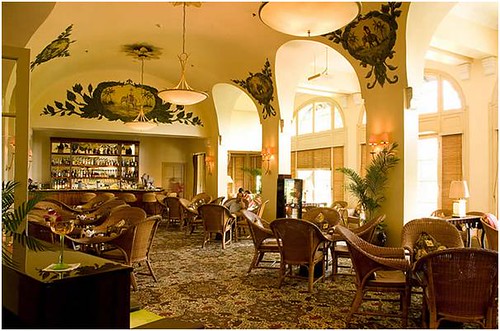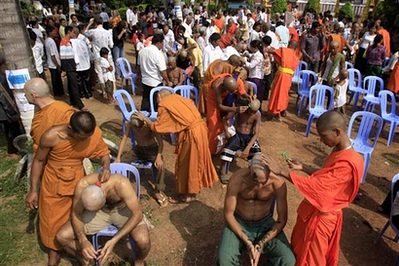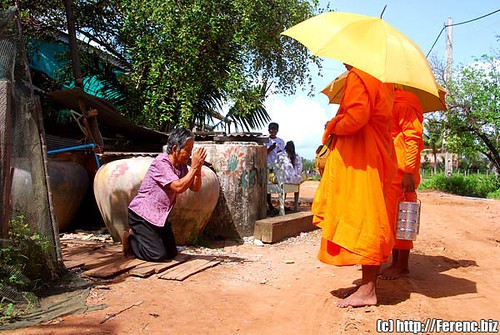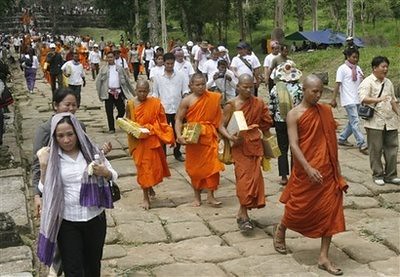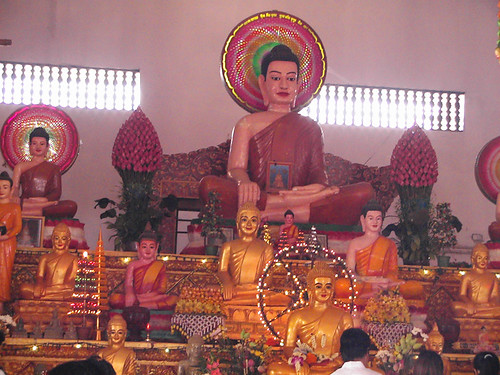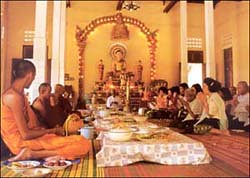Everyday Cambodians eat rice with at least 3 separate dishes of stir fries, curries, soups, or salads. Rice can be steamed Jasmine rice, sticky glutinous rice eaten with papaya salad, or porridge with braised pork. Rice is also processed into various kinds of noodles popular for lunch. They have noodles in soup, stir fried noodles in dark sweet sauce, thick rice noodles in gravy sauce, thin fresh rice noodles eaten with curries, small rice noodles wrapped in rolls and fried as spring rolls, or noodles added with bean sprouts, sliced carrots, and cabbage lavished with sweet fish sauce.
The art of cooking Khmer foods lies in balancing different savors to satisfy their tastes: salty, sour, and sweet. Unlike its neighboring Thai and Burmese cuisines, Cambodians are not too fond of hot food. Chili is served on the side for individuals to add depending on their tolerance level. To add the hotness in food, they use peppers more. The main herbs used in Khmer food are turmeric, galangal, lemongrass, kaffir leaves, and cilantro. Sour ripe tamarinds are used as soup base for their popular sour soup called Samlor Machu. Learning from Indians, they learned how to blend cardamom, cloves, nutmeg, ginger, turmeric, and cardamom into an aromatic paste called Kroeung to make Amok and stir fries.
Vegetables like winter melon, bitter gourds, luffa, cabbage and long beans are boiled to eat with Prahok, salty fermented fish paste. Prahok is placed on banana leaf and grilled on coal fire before using mortar and pestle to mix it well with shallots, garlic, palm sugar, and lime juice. Other vegetables like mushrooms, cabbage, broccoli, snow peas, bamboo shoots, bok choy (oval-shaped cabbage with white stalks), morning glories or kang kong are stir fried. Together of these are called Chha. More unique vegetables are banana blossoms, purple in color, are sliced and added to noodles or made into sour and sweet salad.
As mentioned in my last blog, fish is the most common meat in Khmer cuisine and abundant. Grilled sun-dried catfish called Trei Ngeat eaten with plain rice porridge is very popular for breakfast. They can also be eaten with savory green mango salad and steamed rice. Pork, chicken, and beef are stewed, grilled, or stir fried. Pork is used to make sweet reddish Khmer sausages called Twah Ko resembling Chinese sausage or Singaporean Bak Kwa.
Seafood includes prawns, squid, shrimps, clams, and cockles. Lobsters and crabs are quite expensive, so they are not as common and can only be enjoyed by middle class and rich Cambodians. Roasted ducks are eaten during festivals. Unusual meats like frog, turtle, spiders (seasoned with soy sauce and pepper) are enjoyed as everyday delights in Cambodia.
Desserts are combination of tropical fruits like durian, mango, banana with sweet sticky rice steamed in coconut milk. In Cambodia, durian earns the title of King fruit. Mangosteen is queen, sapodilla prince and milk fruit princess. Others are pineapples, papayas, rose apples, watermelons, and rambutans. Fruit shakes are called Tuk Kolok.
- Amok
- Prahok
- Fried Spiders
- Banh Chaio (Vietnam Influence- inside minced pork & bean sprouts)
- Banh Haow- Steamed rice noodles
- Chicken Curry
- Bai Domneub Sang Kya (kaya on sticky rice)
- Sapodilla
- Durian
- Milk Fruit Cocktail
- Baguette Sandwich
- A more traditional Baguette breakfast
- Bun Nuoc Leo (Fish noodles)
- Pork Noodles
- Loc Lac (Deep Fried Cubed Beef)


